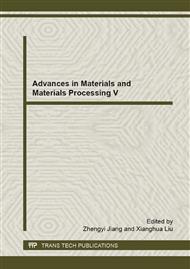p.505
p.510
p.514
p.518
p.523
p.527
p.531
p.535
p.539
The Method of Two-Dimensional Stretching to Reduce Residual Stress in Quenched Thin-Walled Aluminum Alloy
Abstract:
This study aims to reduce the residual stress of quenched thin-walled aluminum alloy. The method of two-dimensional stretching was proposed to further reduce the residual stress in the alloy. The steady-state and transient thermal analysis were used in ANSYS workbench15.0. Static structural was used to simulate one-dimensional and two-dimensional stretching. The simulation results show that two-dimensional stretching method is better than one-dimensional stretching, and it can eliminate the residual stress up to 92.6% when the amount of stretching in length and width is controlled in 2.5%.
Info:
Periodical:
Pages:
523-526
Citation:
Online since:
March 2015
Authors:
Price:
Сopyright:
© 2015 Trans Tech Publications Ltd. All Rights Reserved
Share:
Citation:


